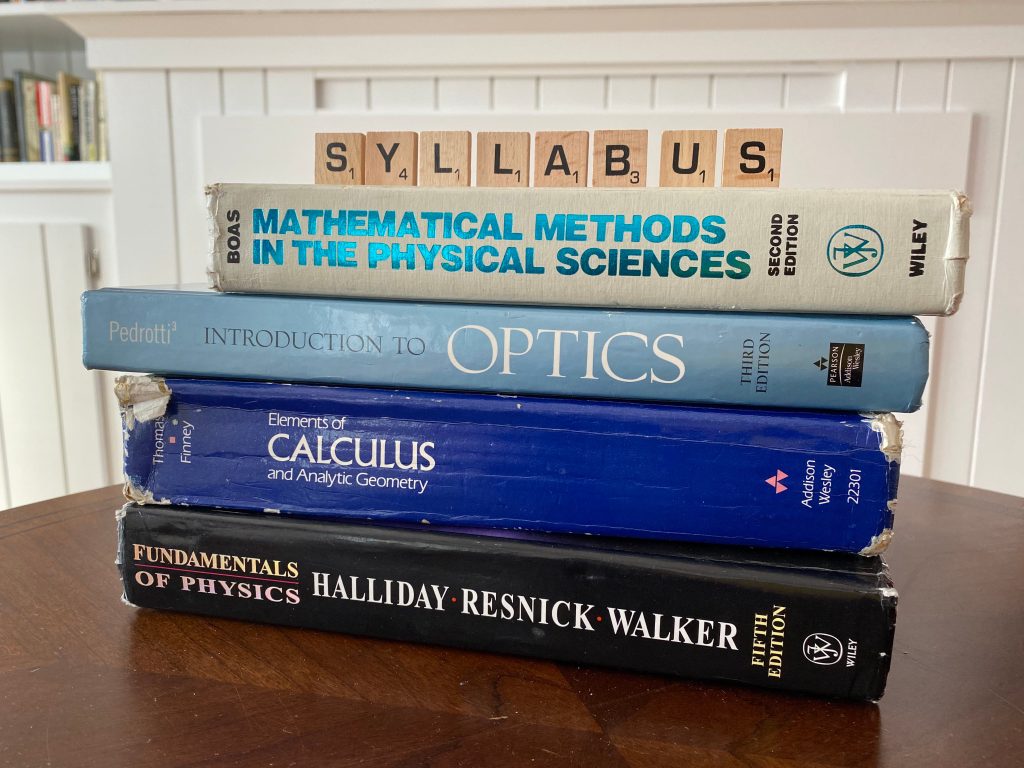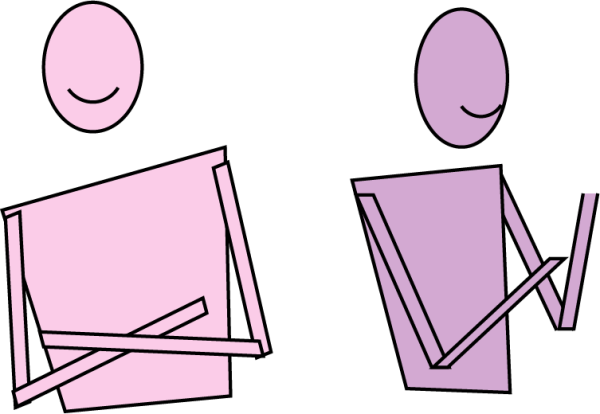Do you like to have students work in groups in your classes? There are many advantages to having students work in groups in class. You can get them to “do” instead of just watch. For physical science and engineering classes, getting them to actively engage with material can be the difference between actual learning and not. I use this technique every year in every class I teach because (1) they actually try and fail in class, where I can see and support their learning in a productive direction, (2) they learn better when they learn from each other, (3) sometimes there are projects or other big things that benefit from a group working on it together, and (4) group and team work is an essential life skill. Very few jobs are done completely solo, and creating a bunch of smart people who can’t interact with other people doesn’t help make the world a better place.

Every year when I present my syllabus and say that students will be in groups and work together, at least one student grumbles that they “hate working in groups.” They cite that they “always” get put with someone who doesn’t pull their weight and end up doing everything. Many students fear having their work diluted or giving someone else credit. These are all real concerns, but they are not fixed or helped by not doing group work. Instead, what needs to happen is that students need to be guided in making their groups work.
Over the years I have developed a process for forming and managing groups to make them pretty functional. For many of the classes, the students form good working relationship. For some, they are long-lasting support structures for students throughout their undergraduate careers. Here in my process:
- Give them points. The group work and functionality must be used in the grading scheme. Students must be able to earn points for working effectively in their groups. I typically have 10% of the final grade in these classes be from the assessment of a student’s work in their group. This 10% comes from the other group members – they assess each other. Thus, the students have control over part of the grade for their group-mates. This incentivizes good group behaviors, as 10% can majorly affect the final grade of a person in the class.
- Ask them about themselves. Do a student survey to help you to form the groups. In the sciences, we have many groups that are minoritized, like women, Black, Latinx, and Indigineous people. The point of the group is to create a support structure for the students. It really helps if the students have stuff in common. One easy way is to have women work with women, Black students with other Black students, and so on. This is a best practice for group work shown from education researchers (here). But, how to you get this information? You give the students a personal survey. In order to allow students to earn your trust, and to help build a little self-confidence and self-worth into themselves as well, give them a survey. Start out with questions about why they are in the class, what they think this topic will teach them, and how it will help them and possible the world. Why do they study science? What good can come from their studies and ultimate work? These questions both help you get to know them quickly, and orient their feelings about the class – it isn’t just about learning science – it is ultimately to make the world a better place. Remind them int he survey that you want to get to know them, so you can teach them better. The last questions are about their identity, like prefers pronouns, gender, and race.
- Get some data. Groups work best when there is a good mix of high, medium, and low performers together. High performers can get practice explaining their thought process to others, which reinforces concepts they are mastering. Lower performers are able to learn from their peers. In order to get this information, you either need information from prior classes in math and science or you need to do an assessment. I typically stick with a math assessment. I check basic trigonometry, algebra, maybe some integral and differential calculus. Intro classes in many fields have calibrated assessment tools, such as a force concept inventory, but they are long, and not available or appropriate for all classes.
- Make the groups consciously. Use the survey and the assessment to make groups. I usually make groups of 3. Each group has a high performer, a low performer, and a medium performer. Put the highest low performers with the highest high performers. Extremely high with extremely low often does not work well. Make sure under-represented folks are together. I put all people who identify as women together. The best is if all 3 identify as women. If you need to mix the women with someone who identifies as a man, I suggest pairing two women with one man. If there are enough under-represented folks, do the same.
- Let them set the expectations. On the first day of class where the groups are being employed, have them start with an exercise in getting to know each other. This is not a cheesy game – this is a discussion about what the expectations are for group-member actions and behaviors. The assignment for the first group work is to answer several questions about what makes a good group member and what makes a bad group member. They should articulate it and write it down and turn it in. After that conversation, they are asked to make a rubric on how they will decide the points to give each other at the end of the semester. They turn these assignments in, and I always save them. At the end of the semester, I return the documents on good and bad behaviors and their group rubric, so they can grade each other.
- Make weekly or daily group work. Give them time in class or discussion to work together in these groups. They will form bonds over struggling. The instructors (including grad student and undergrad instructors) should go around and check on groups to see where they are struggling. You can help 3 students at a time, and you can check on the group dynamic. Make sure no one is being left behind or that someone isn’t working independently. In person, this is pretty easy to do walking around the room. In remote sessions, using break out groups and dropping into them to see how they are working, asking questions, and making sure they are talking is a good practice. It is more likely on remote classes that he students will work independently, so poking into the groups is very important.
- Let them be the (fair) judge. Before the end of the class (or last group meeting, if switching), return the original rubric document to students to remind them of their group’s expectations and rubric for grading. They should be directed to complete an assignment where they grade themselves and their group mates. It is very important that they grade themselves in addition to grading each other, as this gives a benchmark for their grades for their peers. When groups work well, it is expected that they will be awarded all these points. In some ways, these are free points, and depending on the fraction of the grade, they can bring up low grades for students who are good group members, earnestly trying and participating, but struggling with the material.
Well, this is the method I have been employing for group work. It works about 90% of the time, which is about the same frequency that students are reasonable humans. There is that old rule of thumb that 10% of the people take up 90% of your time or inbox, or what-have-you. Makes sense that the same is true for groups. Some students complain (especially in remote situations) that having these permanent groups does not allow for them to get to know other students in the class. Although that doesn’t bother me overly much, you can switch the groups half way. That would allow students to get to know two groups of peers. They can grade each other before switching and make a new rubric with the next group.
If there are other modifications or best practices that others use, I would love to hear. Always looking for ways to improve my teaching and training. Comment or write a post yourself.

 This post is part 2 of an N-part (where N is an integer > 1) series of stories of systematic bias I have directly observed over the past year. These stories detail mechanisms in academia to systematically remove women and under-represented minorities from the academy. Women like Dr. Shirley Jackson (pictured here). Do you want to tell Shirley Jackson to get out? No? Well, awesome! Please read on.
This post is part 2 of an N-part (where N is an integer > 1) series of stories of systematic bias I have directly observed over the past year. These stories detail mechanisms in academia to systematically remove women and under-represented minorities from the academy. Women like Dr. Shirley Jackson (pictured here). Do you want to tell Shirley Jackson to get out? No? Well, awesome! Please read on. Do you find yourself wondering why there aren’t more women, black, Latino, etc… students in science? I don’t wonder. I know why. They are constantly and systematically being removed from science at every level every day. I knew this. I have felt this, but this year it has hit me in the face over and over, and I am really just sick of it. Literally sick to my stomach.
Do you find yourself wondering why there aren’t more women, black, Latino, etc… students in science? I don’t wonder. I know why. They are constantly and systematically being removed from science at every level every day. I knew this. I have felt this, but this year it has hit me in the face over and over, and I am really just sick of it. Literally sick to my stomach. Dear All,
Dear All, Today I have a cool post from another WomanOfScience. It is once again on clothing choice, which is difficult to decide for many women, and is becoming more confusing for young men, as well. I have had a number of prior posts about clothes (
Today I have a cool post from another WomanOfScience. It is once again on clothing choice, which is difficult to decide for many women, and is becoming more confusing for young men, as well. I have had a number of prior posts about clothes ( Hey Ya’ll, It’s Awards Season! As I do every year at this time (
Hey Ya’ll, It’s Awards Season! As I do every year at this time ( In bathroom news this week, the crazy potties (see picture) have been replaced by regular potties in my building! See my
In bathroom news this week, the crazy potties (see picture) have been replaced by regular potties in my building! See my  At the recent big physics conference this year, there was a really great pre-conference tutorial on how to give good talks. I have had a couple posts about giving good talks (
At the recent big physics conference this year, there was a really great pre-conference tutorial on how to give good talks. I have had a couple posts about giving good talks (
Recent Comments